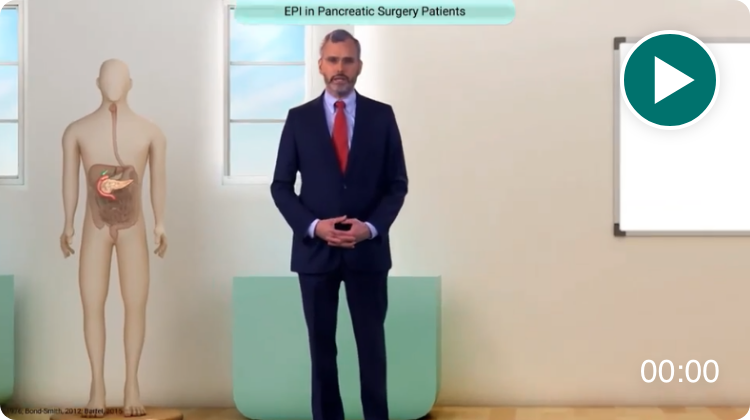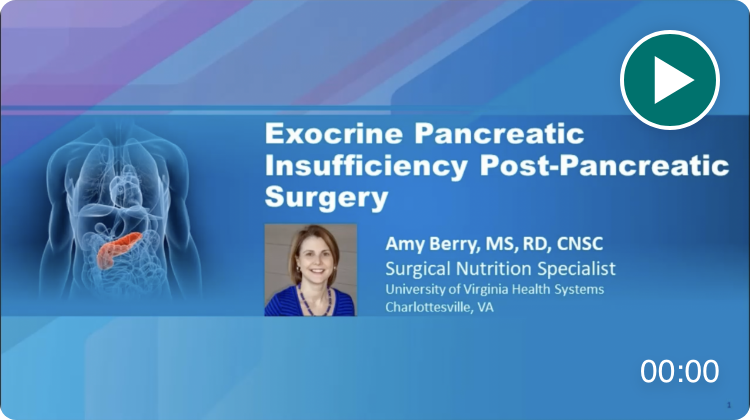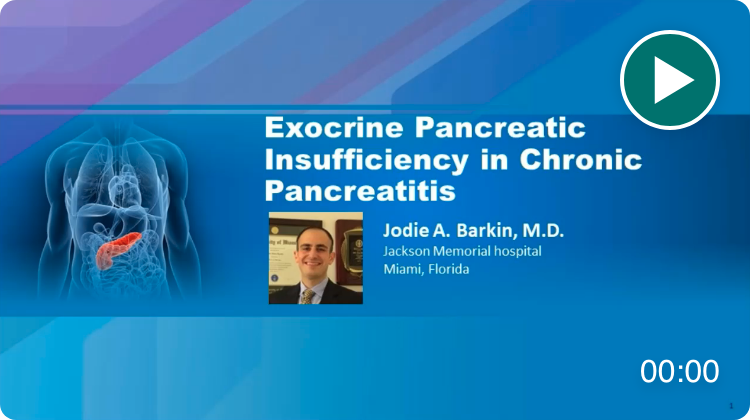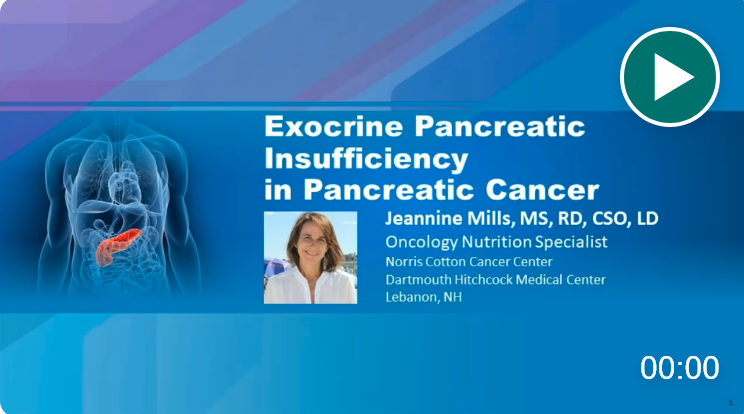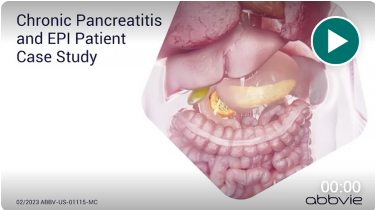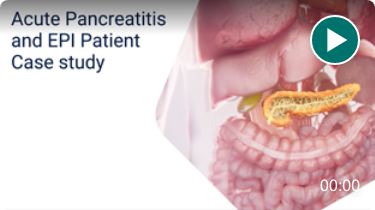
EPI Education
Take a deep dive into EPI and learn from experts in the field.
About EPI: EPI pathogenesis, symptoms, and diagnosis
Etiologies of EPI: Recognize EPI and the barriers to diagnosis
Management of EPI: Key information for managing EPI
Case Studies: Experts present case-based narratives on EPI
Select one or more filters below to explore topic-specific resources.
Transcript
Look, EPI can be defined as a reduction in pancreatic enzyme quantity and/or activity to a level below the threshold required to maintain a normal digestion. That means that EPI means maldigestion, and you know that maldigestion is associated with malabsorption of nutrients. EPI is a very frequent condition that is associated with pancreatic diseases, and pancreatic and gastric surgery. There are other conditions less frequent. But look, up to 84% of patients with chronic calcifying pancreatitis present with EPI. Up to 90% of patients with si- cystic fibrosis suffer from EPI. Up to 92% of patients with pancreatic cancer, mainly those with the tumor located in the head of the pancreas obstructing the main pancreatic duct, and close to half of the patients, after acute necrotizing pancreatitis. The majority of the patients after pancreatic surgery develop EPI, mainly after pancreaticoduodenectomy. And three out of each four patients after total or partial gastrectomy.
So, what are the symptoms of EPI? The classical symptoms are fatty diarrhea, bloating and flatulence due to, uh, carbohydrate malabsorption, abdominal distension and pain, and weight loss. But look, weight loss is a late event in the context of EPI, and diarrhea, fatty diarrhea, depends on the amount of fat that the patient is taking orally with the food. And you should take into account that patients with EPI frequently tend to reduce fat intake in order to avoid symptoms. So fatty diarrhea is f- often not so easy to be reported by patients. Take that into account.
So, the second, uh, important fact, uh, feature of I - are nutritional deficiencies, and nutritional deficiency means that this patient presents with low [inaudible] levels of fat soluble vitamins, proteins, and it's important to check for different proteins, like albumin, prealbumin, retinol binding proteins, transferrin, and lipoproteins, and micronutrients, like magnesium, selenium, and zinc. Next please.
And the consequences. Look, we are not just talking about a condition leading to diarrhea, we are talking about a condition leading to malnutrition related complications, and even mortality. And these patients not only have an impaired quality of life, they are at risk of cardiovascular events, they develop a decreased bone mineral density, osteoporosis, fractures, sarcopenia, and finally an increased mortality.
So, how to make the diagnosis in clinical practice? Very simply. Look at three different domains, presence of symptoms of maldigestion, diarrhea, bloating, flatulence, abdominal distension, cramps, weight loss. Look at nutritional deficiencies, as I told you before, and a pancreatic function test for example fecal elastase. If all these three domains are abnormal, that makes the diagnosis of EPI for sure. I mean, a patient with all these three abnormal, you can be sure that that's EPI. If only two or three, these three domains are abnormal, for example, symptoms with low fecal elastase, or nutritional deficiencies with low fecal elastase, that makes the diagnosis of EPI very likely. But if only one is abnormal, you should look for other causes of that specific abnormality.
So, the cornerstone of EPI treatment is pancreatic enzyme replacement therapy. By using [inaudible] preparations, in order to avoid the acid mediated inactivation of pancreatic enzymes, and inform of mini microspheres, or microspheres in order to ensure a parallel [inaudible] of the em- enzymes together with the meal, together with the food.
The minimum starting dose depends on the disease leading to EPI. So if the patient's suffering from a benign disease, like chronic pancreatitis, or after acute pancreatitis, and the anatomy is normal, the patient was not operated on, the starting dose is in the range of 40000 to 50000 units with main meals, half that dose with snacks. But that dose is not enough for patients with pancreatic cancer, or after pancreatic or gastric surgery. And in that situation the starting dose is between 70000 to 80000 units with main meals, half that dose with snacks.
And of course, the dose should be titrated individually according to the clinical response to pancreatic enzyme replacement therapy in terms of symptom relief, and normalization of the nutritional status. And in cases of unsatisfactory clinical response, the enzyme dose should be stepwise, increased, and/or a proton pump inhibitor should be added on order to improve the efficacy of other pancreatic enzymes.

Exocrine Pancreatic Insufficiency
Learn more about EPI symptoms, nutritional deficiencies, consequences, and PERT.

Take an immersive journey into the physiology of the exocrine pancreas and the pathophysiology of EPI.



